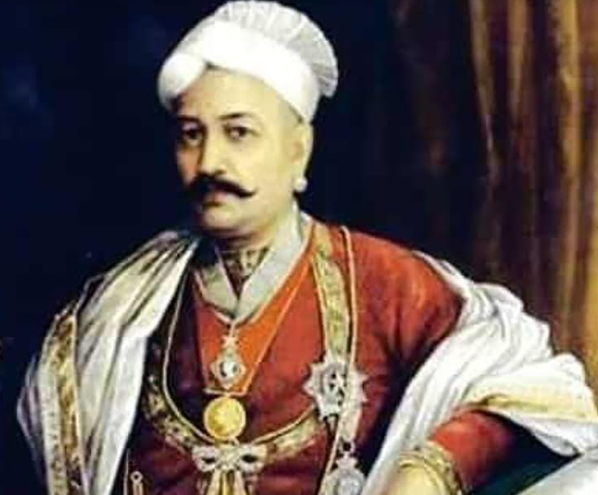It is interesting to compare Britain’s public mourning for its monarch with the general indifference in India for the lives of our monarchs. When Queen Elizabeth was born, ‘native states’ covered a third of the subcontinent, constituted one-fourth of its economy, and contained one-fifth of its population. Yet today these they are typically remembered for extravagance and eccentricity, or for relatively minor acts of patronage. This is a dreadful oversight. The native states deserve a central place in our collective memory because they played no small role in the making of modern India.
For instance, how many in contemporary India are aware that the earliest concerted push for constitutionalism occurred not in British India but in “Indian India”? The story goes like this. In the first half of the 19th century, the British had come to the conclusion that the native states were a morass where “despotic” rulers treated their subjects as “mere milch cows”. Since meddling openly generated resentment, the British tried to use education to produce “responsible” rulers. Baroda became a test case for this approach. After Malhar Rao was deposed on grounds of maladministration in 1875, the British selected Sayaji Rao Gaekwad, then an illiterate 12-year-old, and set about grooming him for office. Under the supervision of his Oxford-educated tutor, Frederick Elliot, Sayaji Rao was introduced to various “gentlemanly” activities. But then on the eve of his ascension, a fierce debate broke out over the rightful role of a maharaja.
The traditional view in the native states was that a maharaja was entitled to decidedly absolute rule in the interest of his dynasty. This view now came under attack from ambitious and patriotic young men in Bombay Presidency, who had received a modern education. Hoping to see the backs of the British, they urged Sayaji Rao to “strengthen his state”. Remarkably, Elliot nurtured these views. Because he wanted to make Sayaji Rao, whom he cherished, a leading figure in western India, he let his ward mingle with Maratha firebrands. Thus, it was that Sayaji Rao came into possession of Niccolò Machiavelli’s ‘Prince’, which he promptly “adopted as his political guide”.
This development shocked the British who set about trying to oust Elliot. It also alarmed Baroda’s celebrated Dewan, Sir Madhava Rao. It was all very well to be moved by Machiavelli’s exhortation to liberate one’s patria (homeland) from “barbarians”, but much depended on knowing how to do this. Having devoted his career to preserving native states from the grasping British, Rao was only tooaware of their comparative weakness. And so, in 1881 the anxious Dewan convinced the British to allow him to deliver to Sayaji Rao a “special education” in the form of lectures on the “art and science of government”.
In his lectures, Rao urged Sayaji to see that the circumstances he confronted were quite unlike those in Machiavelli’s Prince. What maintained the British in India was public credit and public opinion: Indians were willing to lend them money and obey their laws because they expected them to improve their lives — and did not foresee a better alternative. Consequently, violence could accomplish little, as the great mass were unlikely to side with the native states. To supplant the British, the native states would need to outperform them. And in an age where newspapers were watching the ruler’s every move, half-measures would fool few. “A fierce light beats upon the throne,” Rao warned. Only thoroughgoing reform would suffice: the native states had to establish a constitutional order in which governance would depend not on the maharaja’s penchants but on impartial and capable public institutions.
Rao struggled to be heard. The constitution he proposed to Gaekwad was denounced by traditionalists and militants alike. The sardars and bais mocked him as a “Madrasi” who wanted to turn Baroda into Britain, while hotheads in Bombay, reportedly including the young Bal Gangadhar Tilak, circulated anonymous pamphlets accusing him of timidness. But the story does not end there. Rao’s entreaties prompted a much wider debate in western India. It led to dozens of publications on the importance of constitutionalism, which decisively shaped the world view of liberals clustered in the Poona Sarvajanik Sabha and the Indian National Social Conference, most notably M G Ranade and G K Gokhale. These figures then went on to shape the “moderate” wing of the Indian National Congress, which made constitutional reform its signature.
This is only one example of how the native states contributed to ideas and policies that have shaped contemporary India. There are many other stories to be told: about Mysore and Travancore fostering representation, Tanjore and Vizianagaram revitalising culture, Bhavnagar and Gondal encouraging education, Indore and Mayurbhanj facilitating enterprise, and Kapurthala and Bikaner advancing diplomacy. As we continue to excavate these stories, we will see that the natives states were patrons of wider national progress, serving as incubators of talent, arenas of debate, and laboratories of policy. And perhaps then we will give them their due by celebrating their contribution to the making of modern India. ¦ Rahul Sagar teaches political science at NYU Abu Dhabi and
is the author of ‘The Progressive Maharaja: Sir Madhava
Rao’s Hints on the Art and Science of Government’

